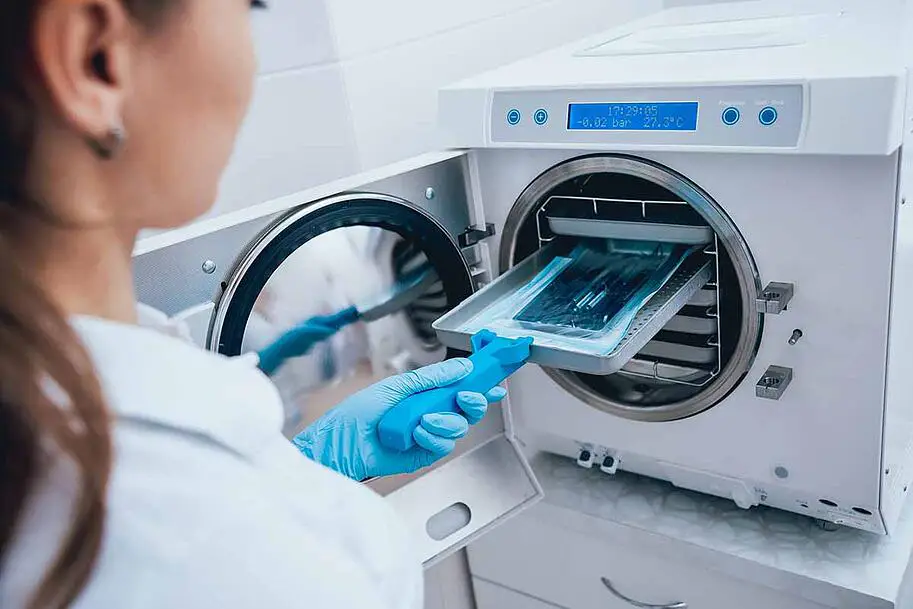
Feb 1, 2023
Sterilization is an essential process for safety-proofing medical devices, pharmaceuticals, as well as food and beverages. It involves treating products to destroy living organisms or render them incapable of reproduction. Note this process is different from disinfection. Disinfection does not completely destroy bacteria but, as a term, it’s often conflated with sterilization.
Without sterilization technologies, people across the globe are at the mercy of harmful microbes and infectious diseases. Powerful and effective technologies in this field will remain in high demand.
Currently, new developments for sterilization technologies are in motion. Sufficient exposure times could lead to the destruction of prions, the infectious proteins responsible for transmissible spongiform encephalopathy diseases. Developments like these could create huge strides in medicine and healthcare, helping more people live healthier lives.
Progress is underway, reflecting the market’s continued expansion. Valued at $8 billion in 2022, BCC Research predicts the market for global sterilization technologies should reach $12.3 billion by 2027. Given this jump in value, let’s dive into the four methods of sterilization.
The 4 main types of sterilization technologies
Chemical sterilization involves the use of chemicals to sterilize, decontaminate or disinfect products. This method is making inroads in the food processing industry for food decontamination, with one of the fastest-growing areas being ozone use.
Ethylene oxide (EtO) is the principal chemical used in chemical and gas sterilization, particularly in healthcare settings. As a sterilizer, it’s easy to use and flexible, making it appropriate in various settings.
Filtration sterilization uses membranes that physically remove living microbes from fluids and air. The technology is based on the principle of size exclusion, which means microbes of a certain size are retained while other substances pass safely through a membrane. This technique is ideal for materials that can become physically or chemically compromised through other sterilization techniques.
Consumable products constitute the majority of sales in the filtration space, with some companies reporting 90% of sales from consumables. The filtration sterilization market is expected to reach nearly $609.8 million in 2027.
The process of ionizing radiation sterilization works by killing microbes with short, high-energy, electromagnetic wavelengths. The smaller the wavelengths, the higher the energy.
Consumers have become wary of irradiated food products, which has stymied the market for ionizing radiation technologies. Despite this, radiation is still valuable in healthcare settings, particularly for combination products that cannot withstand sterilization by heat or chemicals.
Thermal sterilization breaks down microbial proteins, lipids, carbohydrates and nucleic acids with heat. There are three core temperature ranges that characterize thermal sterilization: pasteurizing, boiling, and above boiling. Processes include autoclaving, distillation, pasteurization, and retorting.
Technologies in this sector are well-established and commonly used for sterilizing foods, beverages, and medical devices. These industries are driving demand for thermal sterilization technologies, pushing the market to reach heights of $315.4 million by 2027. A continually expanding population and the significant use of both consumer and industrial electronic equipment are key growth drivers, although the ongoing economic uncertainty is putting the brakes on the market.
With continued expansion on the horizon, there’s never been a better time to dive into the industry for sterilization technologies. BCC Research’s latest report breaks down the ins and outs of this market, offering five-year forecasting and in-depth analysis. Penetrate the market haze with our report.
Download your complimentary overview or purchase the report in full here.
Alternatively, consider becoming a member of the BCC Research library. Membership offers access to the full suite of reports within your chosen field, allowing for a 360-degree approach. Get in touch with a helpful member of our team through the button below – we’d be happy to hear from you!

Olivia Lowden is a Junior Copywriter at BCC Research, writing content on everything from sustainability to fintech. Before beginning at BCC Research, she received a First-Class Master’s Degree in Creative Writing from the University of East Anglia.

Biophotonics: Technologies and Global Markets (PHO024B)

Global Trade: A Strategic Shift The global trade environment is undergoing a dra...

The global demand for cutting-edge materials continues to rise, and at the foref...

We are your trusted research partner, providing actionable insights and custom consulting across life sciences, advanced materials, and technology. Allow BCC Research to nurture your smartest business decisions today, tomorrow, and beyond.
Contact UsBCC Research provides objective, unbiased measurement and assessment of market opportunities with detailed market research reports. Our experienced industry analysts assess growth opportunities, market sizing, technologies, applications, supply chains and companies with the singular goal of helping you make informed business decisions, free of noise and hype.